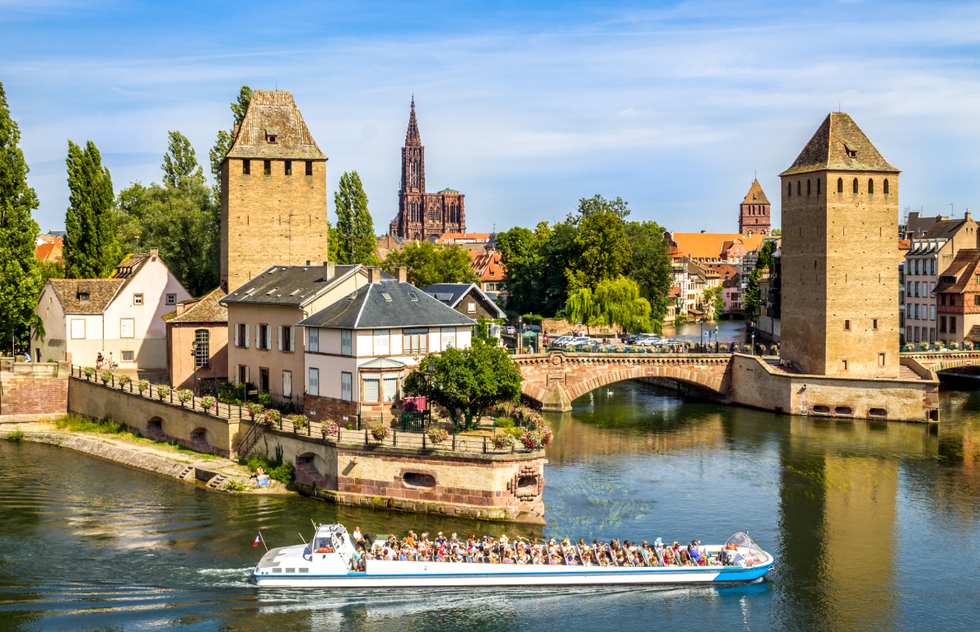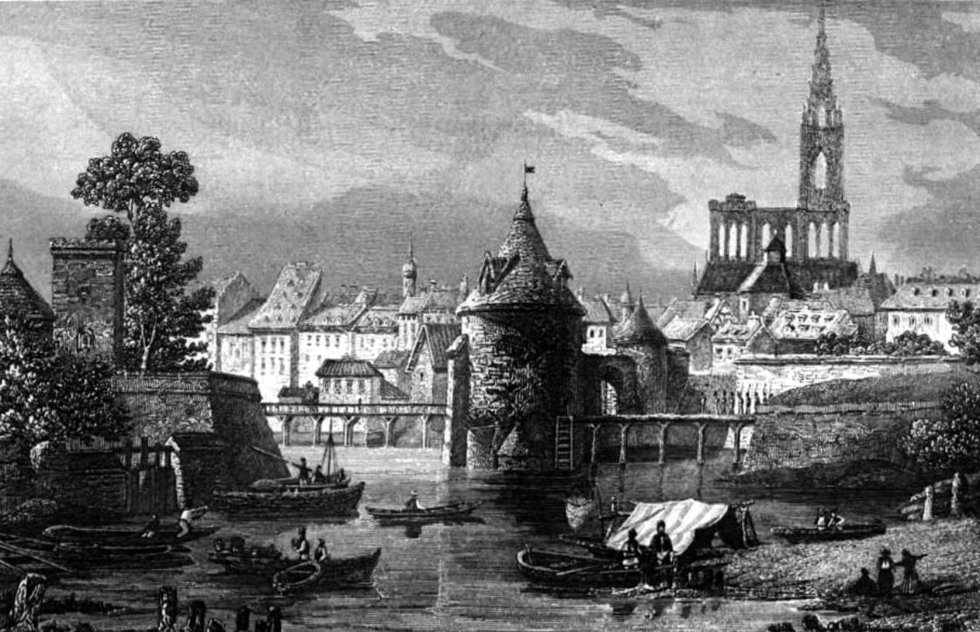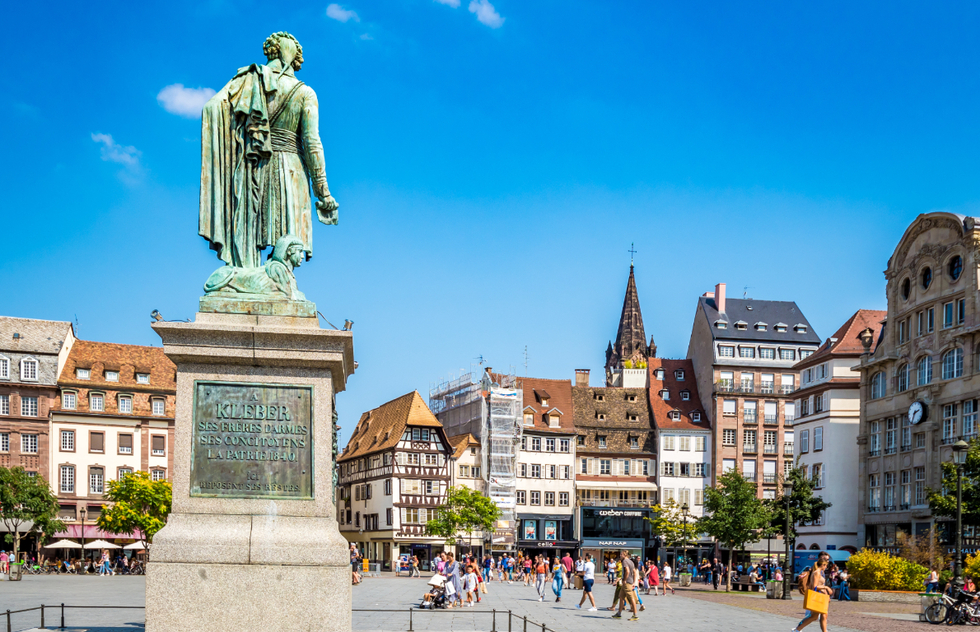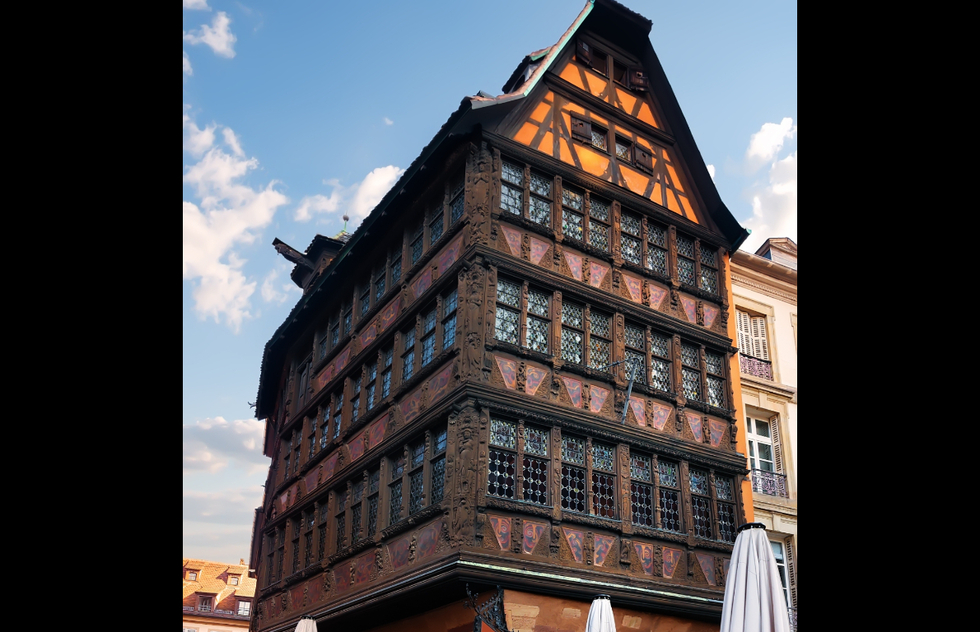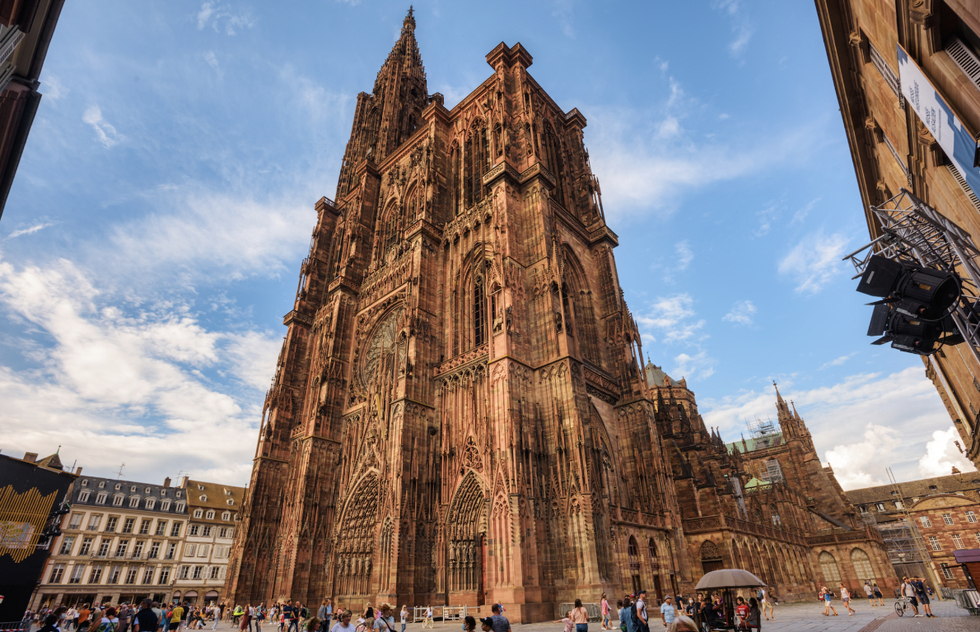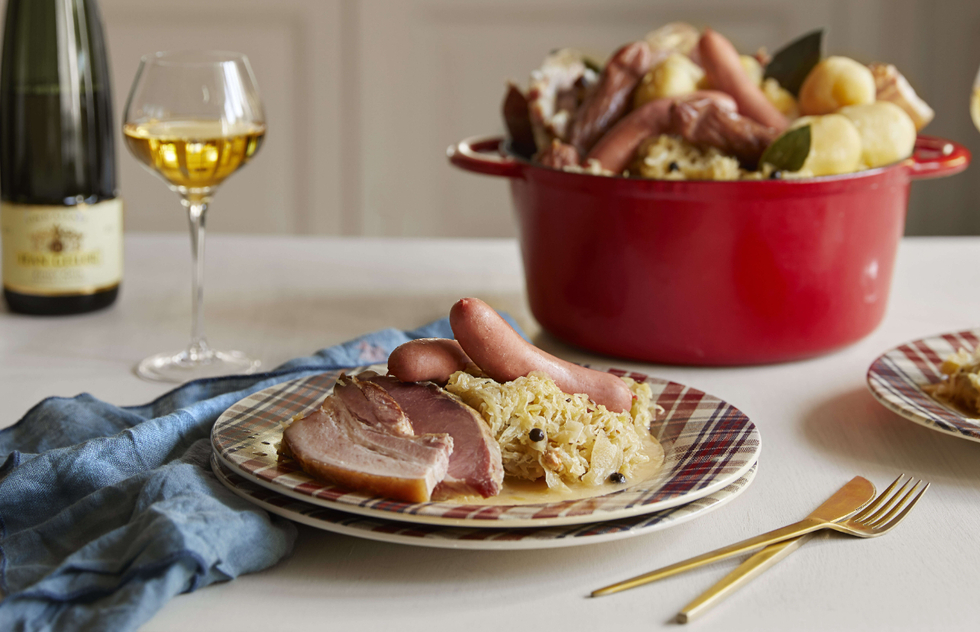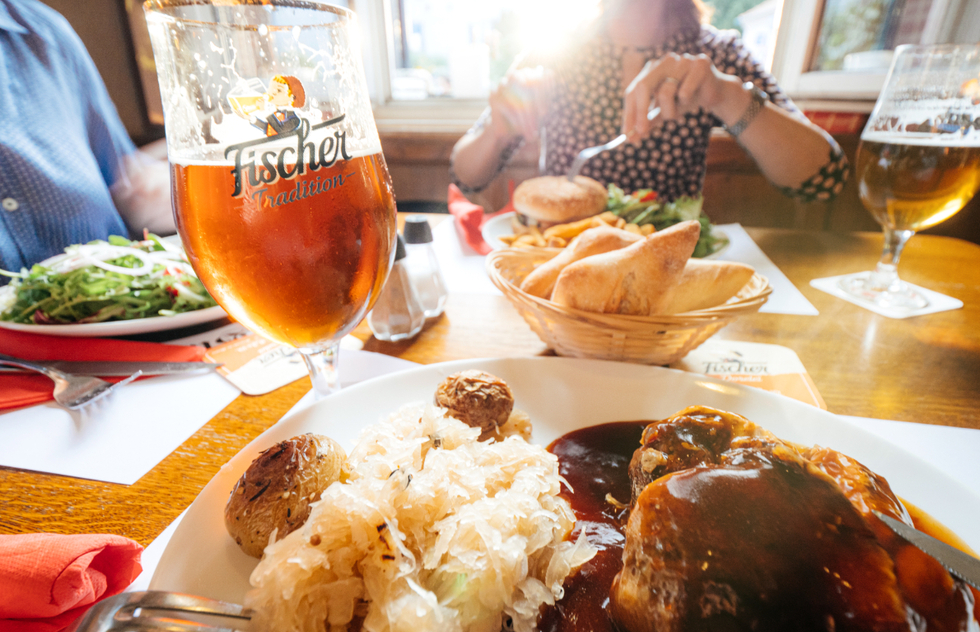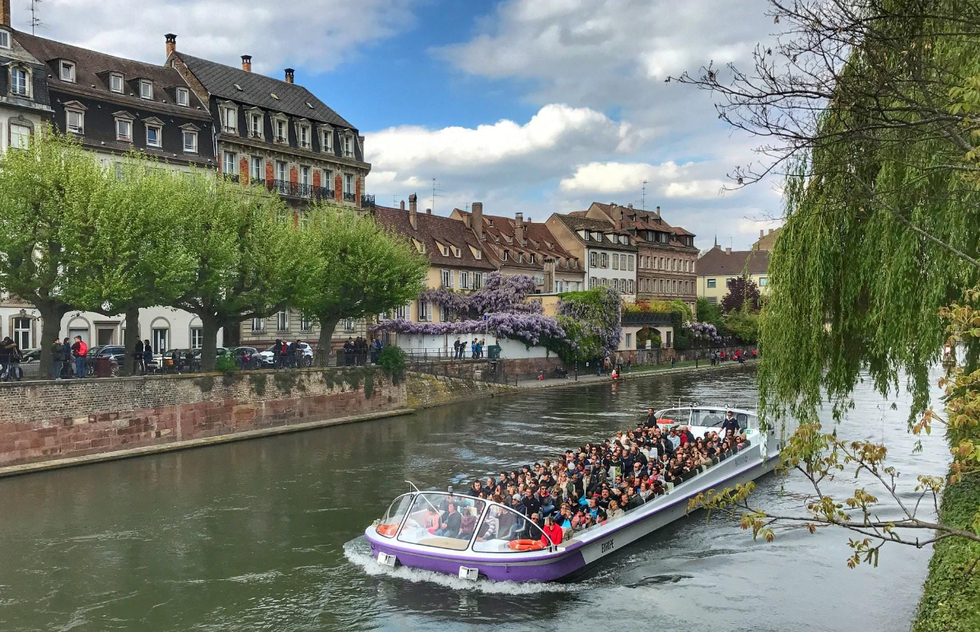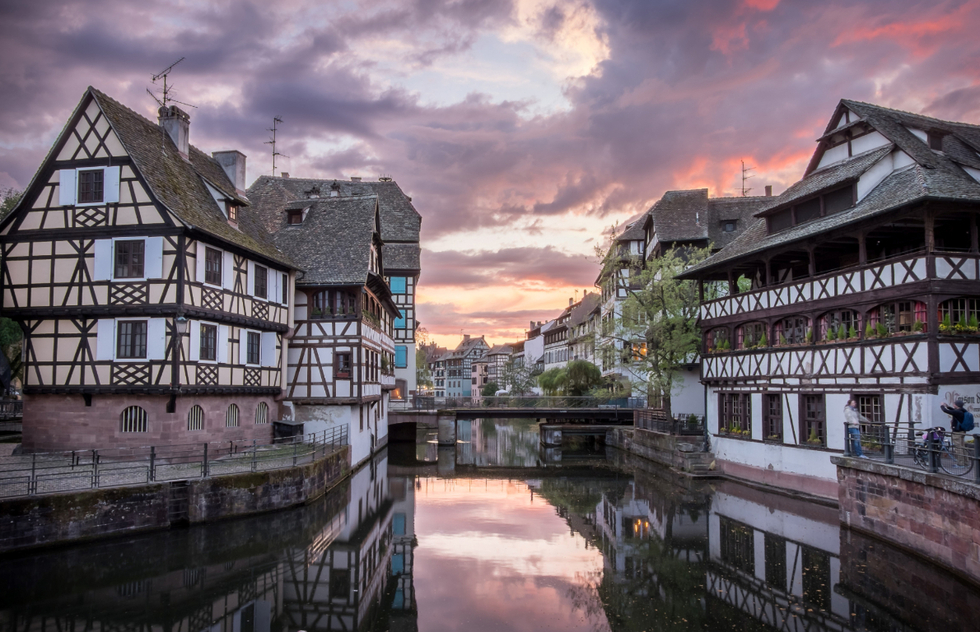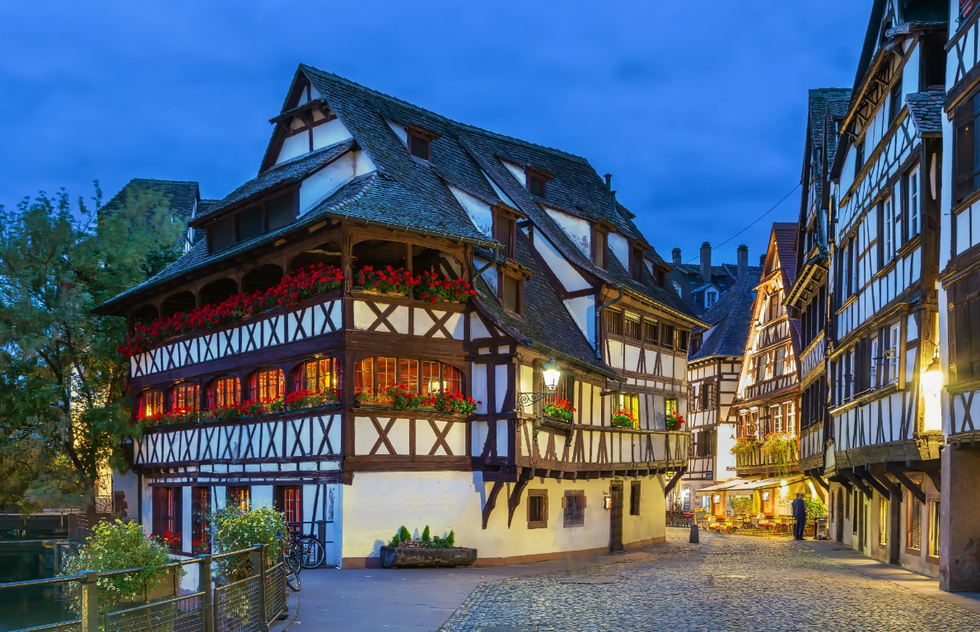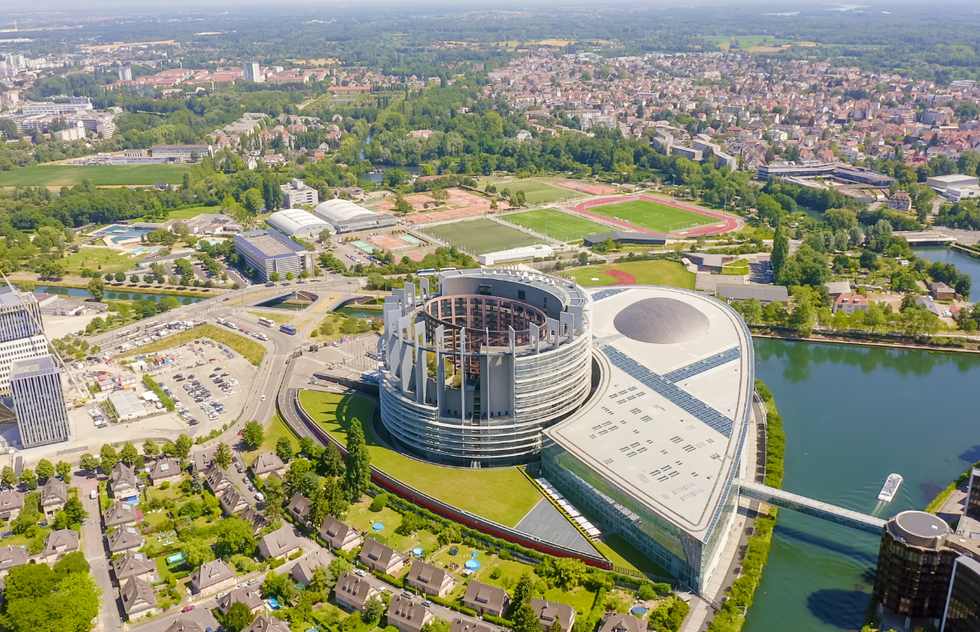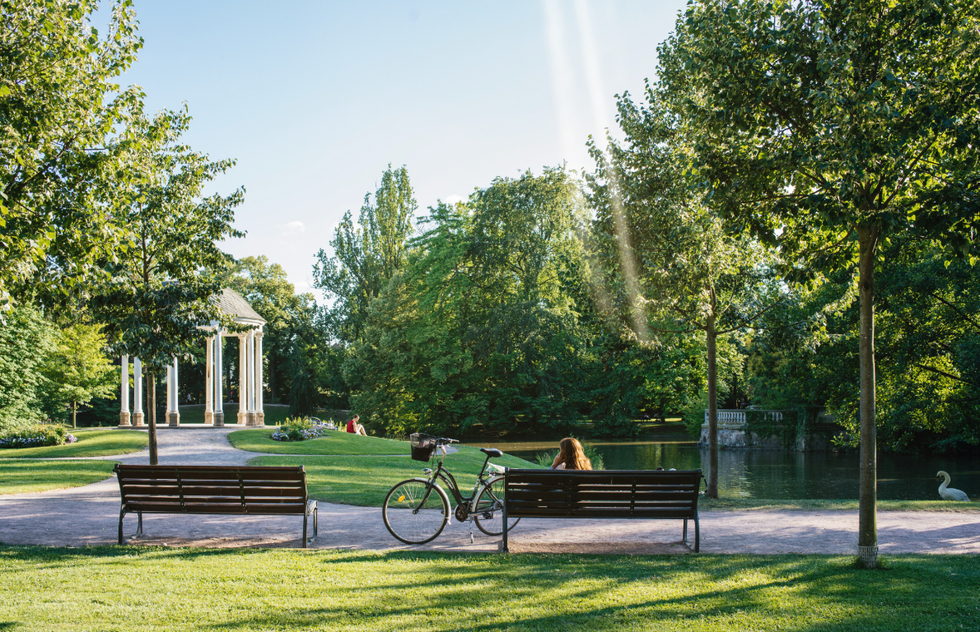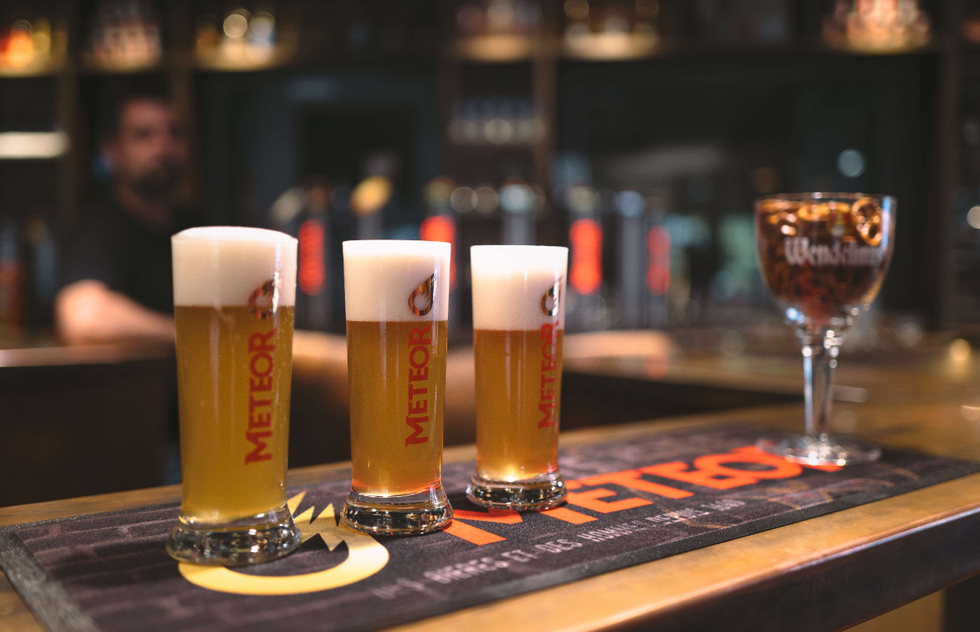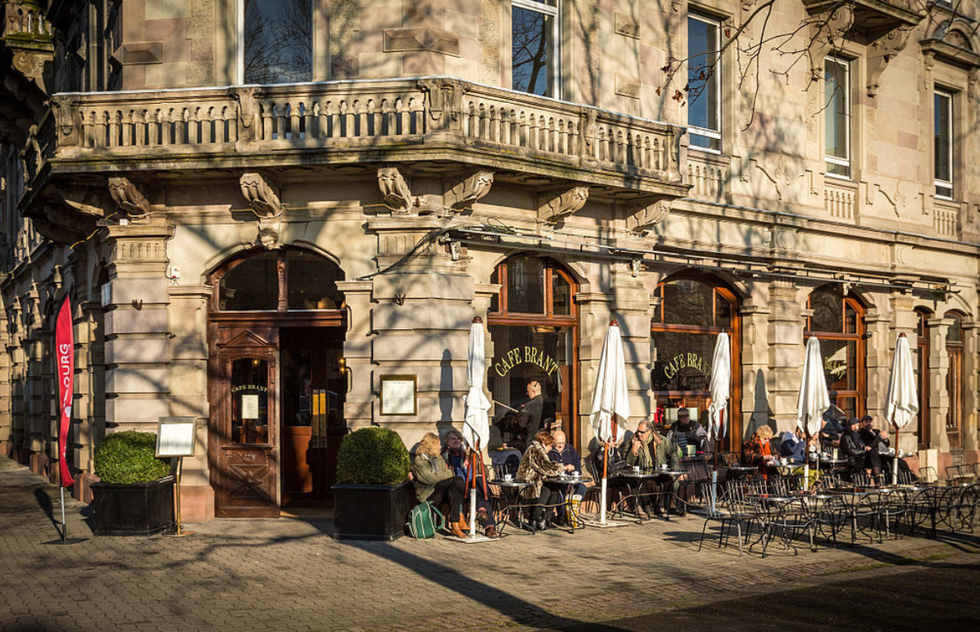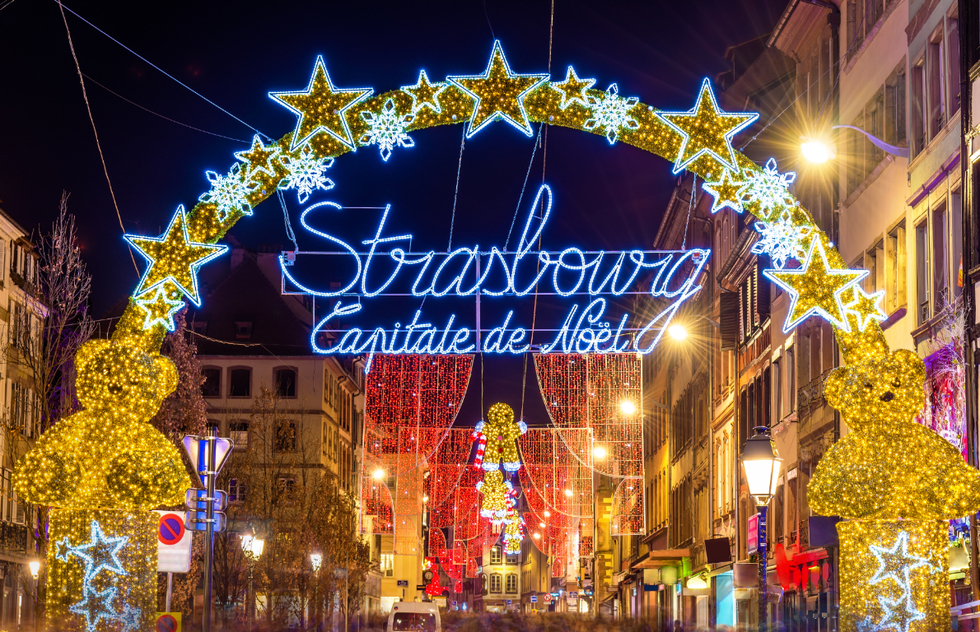How to Spend Two Days in Strasbourg, the Proudly French City That Looks Like Germany
By Margie RynnLet’s say you’re visiting Paris and you’d like to see another side of France—or even another country in Europe—but you don’t have a lot of time and you don’t want to take a plane. The perfect solution: Strasbourg, capital of Not-Germany.
You can get there via high-speed train in less than two hours from Gare de l’Est in Paris, and while you’ll still be in France, you will feel as though you have crossed into neighboring Germany. There are half-timbered buildings, beer, sauerkraut, and kugelhopf—all in French.
Almost. About half the population still speaks the local dialect, Alsatian, which sounds very German to most ears—but whatever you do, don’t say that. The Strasbourgeois are vehemently French and want you to know it.
At the same time, this historic capital of the Alsace region and the current home of the European Parliament has a true cross-cultural soul. A Teutonic breeze wafts over the nearby Rhine River, swaying the willow trees that drip over the Ill, a lazy tributary that snakes around the city. But despite the undeniable German influence blowing through, you’ll feel great gusts of Gallic je ne sais quoi as well.
Scroll on for an easy-to-follow 2-day itinerary that will show off the best of this uniquely rewarding city.
How come this French city looks like it fell out of one of the Grimms’ fairy tales? Blame a long and often, well, grim history of war and conquest.
For several centuries Strasbourg was indeed Germanic, first as part of the Holy Roman Empire and then as a “free city” and commercial center. It wasn’t until 1681, when Louis XIV annexed Alsace, that Strasbourg got its first taste of Frenchitude.
For the next two hundred years, Strasbourg was basically French. Napoleonic reforms brought on economic growth and the city prospered. Then in 1870, the Franco-Prussian War kicked the French out and the Germans were back in charge.
A mighty tug of war commenced. Between 1871 and 1945 the city changed nationality four times—most brutally during World War II, when the occupying Nazis, who considered French Alsatians to be German, forced Strasbourg residents to fight in the German army against their French countrymen.
This is just one reason why it’s best to think before exclaiming, “Wow, I feel like I’m in Germany!” to your bed-and-breakfast host.
Now that that's settled, let's start the tour.
Pictured above: 1838 engraving of Strasbourg
Catch an early train to Strasbourg so you’ll have plenty of time to see everything. After a 10-minute walk from the train station, you’ll be in the city’s historic center, the Grande Île. A “big island” surrounded by two arms of the Ill River, this walkable area is where you will be spending most of your time. If you are luggage-laden, a nifty streetcar system can cart you around town.
To get oriented, look up—chances are you will see the 142-meter (466-ft.) spire of the Cathédrale Notre-Dame de Strasbourg shooting up over the rooftops. Follow the spire toward the cathedral, passing through the city’s main square, the enormous Place Kléber (pictured above), lined on one side by the neoclassical Aubette building, now a shopping center. A short walk down Rue des Grandes Arcades will lead you to Place Gutenberg, featuring a statue of the man who invented the printing press (in Strasbourg) and the massive 16th century Neubau, a Renaissance building that is now home to the Chamber of Commerce.
Just before you reach the cathedral, you’ll pass by the Maison Kammerzell, a 16th-century building adorned with sculpted woodwork and bottle-bottom stained-glass windows. To see the inside you have to eat at the restaurant, which is good but a bit of a tourist trap.
Plop your bags at your hotel, hopefully nearby. Our suggestion: Hôtel Suisse. It’s not only cozy and comfortable and right next to the cathedral, but the place also makes its own kugelhopf, which is on offer at breakfast.
Your next stop: the cathedral. It took 300 years to construct this stupendous structure, and when you get up close, you’ll see one of the reasons why—the impossible lacework of stone covering the façade. Carved out of reddish-gold sandstone, a vertical network of delicate gables, columns, and sculptures draws your gaze toward the heavens and a neck-craning view of an open-work octagon bell tower and spire. When it was completed in the 14th century, the cathedral was the tallest building in the Western world. Even today, the view of the city from the 66-meter-high (216-ft.) platform feels celestial.
Once inside the church, you are confronted with immense vaulted arches, pillars, and buttresses, as well as original 12th- and 14th-century stained-glass windows, sculptures, a world-famous organ, and a huge 16th-century astronomical clock (pictured above). Every day (except Sunday) at the stroke of 12:30pm, a parade of mechanical apostles emerges from the clock to get blessed by Jesus as angels and Death take turns ringing bells.
Next to the cathedral lies the Place du Château, a large square harboring two important museums: the Palais Rohan and the Oeuvre Notre-Dame. The latter is the best complement to a cathedral visit, showing off additional 13th-century statuary and stained glass as well as works of Alsatian masters from the 15th and 16th centuries.
By now you should be getting hungry, and you’re in luck: One of the highlights of a trip to Strasbourg is the food. This is yet another example of the benefits of a cultural mix. While Alsatian cuisine may look Germanic, it is indeed French, with all the high standards that usually apply.
A classic dish is choucroute (pictured above), which is cooked sauerkraut with sausage and cured meats. That might not sound enticing, but when both the sauerkraut and the sausage are made by expert local artisans with quality ingredients, it’s a delight. The same can be said of flammkuchen, aka tarte flambée, a sort of Alsatian pizza with cheese and ham that can be utterly banal—or, when done right, delicious.
Other specialties include grumbeerekiechles (potato pancakes), coq au riesling (chicken in Riesling wine), and baeckeoffe (a slow-cooked casserole of meat and marinated vegetables). Desserts range from kugelhopf (a sweet yeast-bread) to bredele (Christmas cookies) to strudel to spice bread.
The ideal place to sample these dishes is a winstub, a traditional Alsatian home-style restaurant, complete with wood paneling and checked tablecloths. A lighter lunch option is Binchstub, a casual spot with the best tarte flambée in town, not to mention local beers on tap. It’s at the end of a tiny impasse off Place Broglie, where you’ll find a farmers market on Wednesdays and Fridays. If you plan to visit Binchstub for dinner, reserve ahead.
After lunch, take the easy-to-amble path that runs right along the Ill (pronounced eel) River, the tranquil waterway divided into two arms surrounding the city center. If you’d prefer to be on the water, you can rent an electric boat (no license required) or take a 1-hour, 8km (5-mile) guided group cruise that circles the historic center and heads north, past the grand 19th-century Neustadt neighborhood to the European Quarter.
For dinner, reserve a table at Au Pont Corbeau for gourmet cuisine Alsacienne in a beautiful, wood-paneled winstub. All the ingredients (and the wines) are local and meet the highest standards, yet the price remains well within the realm of reason. Try the sorbet quetsche, or Damson plum sherbet, for dessert.
Now waddle back to your hotel and collapse into a deep, well-deserved sleep.
Breakfast on kugelhopf at the Hôtel Suisse or at Patisserie Christian, a delightful tearoom with two locations, both in centuries-old buildings decorated with lots of dark wood.
Now toddle over to the district known as Petite France, which is actually the most quaintly Germanic neighborhood in town. Built over the delta of the river Ill, the narrow streets and canals in this area are filled with half-timbered houses, pastel colors, and steeply slanted roofs. Back in the Middle Ages, tanners, millers, fishermen, and prostitutes worked amid the river’s five branches, but today the streets are filled with restaurants, souvenir shops, and tourists.
In high season, the crowds in Petite France may cancel out some of the charm factor, but it would be a shame not to visit—not only for the photo ops but also for the bridges (covered and not) and the view of the city from the top of the Vauban Dam.
Reserve ahead for lunch at Maison des Tanneurs (pictured above), located in a historic, geranium-bedecked, half-timbered historic monument that happens to have excellent food. If you don’t have room for a classic choucroute, you can sample a lighter fish version here.
Should you feel the need to burn off a few of the calories you’ve collected, you can go for an afternoon bike ride, taking advantage of Strasbourg’s excellent rideshare program, Vélhop. For as little as €6 ($6.30) per day (deposit required), you can pick up a bike at one of the Vélhop boutiques or stations. All types of bikes are available, from classic adult and child-sized to electric and cargo versions.
Once you’ve got wheels, you’ll have 600km (373 miles) of bike paths to choose from, including the 85km (53-mile) Forts Trail, which takes you around and across the Rhine to a border town in actual Germany. Consult Strasbourg's bike map to find a route.
One easy option for bicyclists is to pedal along the river to the European Quarter. Take the Quai Mullenheim north-ish until you see the European Parliament building (pictured above), a huge, crescent-shaped marvel that hugs the banks of the Ill. Next to this glass structure stands a 60-meter-tall (197-ft.) modern take on the Tower of Babel that opens toward the city. Fervent Europhiles can visit the Parliament buildings and, if by chance there is a plenary session, can even sit in and watch.
Next, pedal past the parliament complex and cross the bridge to the other side of the river. Turn right and continue down the riverside bike path, past the curious 1990s-era building that houses the European Court of Human Rights and resembles two giant salad spinners on stilts.
Take the next bridge back over the water. Soon, on your right you will come upon the Palace of Europe, a vaguely Aztec-looking structure that houses the Council of Europe (not to be confused with the European Council in Brussels).
More compelling, though, is the gorgeous Orangerie Park (pictured above) on your left. This vast stretch of greenery is a good place to rest and perhaps spy a stork, the symbol of Alsace.
As your Strasbourg escapade winds to a close, take a moment to enjoy a glass of something cold and refreshing before you head back to the train station. Once again, the Franco-German mix tends toward the delicious.
Strasbourg is the beer capital of France. Not only are many of the most popular brands based in the vicinity (Kronenbourg, Fischer, Meteor, etc.), but there are dozens of local brasseries, or breweries, like Brasserie Bendorf, Brasserie Perle, and 3 Mâts, where you can sample and purchase artisanal brews. If you just want to buy some bottles, there are endless options at Le Village de la Bière.
And then there’s wine. This is France, after all. Alsatian wine has its own official website, where you can learn all about the local nectars, be they Gewürztraminers, pinot gris, or Rieslings. Famed for delicate, flavorful white wines, the region also produces crémant d’alsace, a lighter, cheaper alternative to champagne.
There are dozens of tempting establishments where you can try the local product, but a particularly nice stop on the way back from your bike ride is Café Brant, a 19th century–era café with a Viennese feel. Sit at an outdoor table with a view of the Place de l’Université and the grandiose University of Strasbourg building and order a glass of wine or a Kronenbourg 1664 beer—or, for short, “une seize” (pronounced sehz). Now all that’s left is to raise your glass and toast the city in Alsatian: “S’gilt!”
Come back to Strasbourg at the end of the year to experience holiday merriment in the self-proclaimed "Capital of Christmas." Dating back to 1570, the Strasbourg Christmas Market is one of the largest and the oldest yuletide fests in Europe. During the month before Christmas, the market encompasses some 300 stalls spread over every available square in the city center.
Almost every building is swathed in lights, and a 30-meter-tall (98-ft.) Christmas tree reigns over Place Kléber. Gifts, goodies, food, festivities—it’s non-stop Noël. Not surprisingly, hotels and everything else book up fast during Christmas season, so plan ahead.
For opening hours, tickets, and other valuable information about the city no matter the season, download the brochure from Strasbourg's official tourism office.





